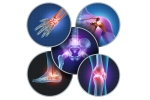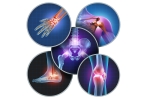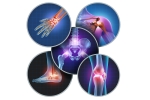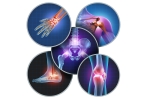Home »
Blog » Pain Management
| Stem Cell, PRP, Acupuncture in Queens & Long Island, New York
Pain Management | Stem Cell, PRP, Acupuncture in Queens & Long Island, New York
Living with chronic pain, it can be tough to figure out the level of functioning that is going to allow you to get things done without making your symptoms flare. There’s a fine line between doing too much and too little. Avoiding activity because we fear it may increase our pain is maladaptive (meaning not helpful), but overdoing it and making your symptoms flare is also maladaptive! This sounds like you can’t win, but it’s about finding that balance.
Read more
When you desperately need pain relief and you don’t want surgery, interventional medicine specialists can help. Interventional medicine is a field that specializes in relieving your pain by directly treating its source: the nerves sending the pain signals. Interventional procedures are primarily considered after conventional medical treatments fail to provide pain relief and before you resort to surgical intervention. These three nonsurgical treatments are only a few of the many pain-relieving options.
Read more
Pain Management Alternatives - Millions of Americans suffer from chronic pain every day. Sports injuries, chronic neck, joint, or headache pain, and even recovering from surgery are all reasons why some people deal with pain. Pain medication prescriptions are written daily by doctors, but what if there was a way to manage pain without the worry of addiction or possible side effects? Today there are several alternative options to get away from powerful pain medications or opioid-based painkillers.
Read more
With so many different theories and models on chronic pain, it can be confusing to fully understand how it works – especially for those who suffer from it. But one such model, known as ‘the pain triangle’, is a simplistic way to view chronic pain, providing patients with a lot of knowledge and potential recovery options.
Read more
Chronic back pain is one of the most common complaints among adults, in part, because the back and spinal column are complex structures. There is a lot that can go wrong there. Often, back pain gets better with self-management. Things like icing and rest cure many problems temporarily. When that isn’t enough, look for an alternative that might include spinal cord stimulation.
Read more
When most people think about effective treatment for arthritis, Parkinson’s, or even cancer, they think of surgery and prescription medications. But what if physical therapy is the answer? In the last few years, physical therapy has become vital to the treatment and rehabilitation of anyone who is either ill or injured. And especially for older adults and seniors, physical therapy works both as a tool to recover from an injury and prevent several physical ailments.
Read more
Chronic pain does more than just cause physical problems. The underlying effects it can have on the psychology of sufferers can be hugely detrimental to their health and wellbeing. Let’s explore the psychology of pain and the importance of understanding it. When people hear the term ‘chronic pain’, they tend to directly relate it to purely physical problems, whether it’s back pain, arthritis, or any other number of issues that are experienced frequently, by people all over the world.
Read more
If you’re grappling with an injury or musculoskeletal condition that requires surgery, the good news is that you’re on the road to better, pain-free function. The potential bad news is that this road to recovery may get slightly worse before it gets better as your body heals from both the original damage and the repair.
Read more
Social isolation is common in people with chronic pain. For most people, day-to-day life involves interacting with others, both throughout the day at work or at the home, as well as in social settings such as meeting up with loved ones. Social interaction is an important part of our lives, but when chronic pain makes an appearance, things can drastically change.
Read more
In 2015, the medical researchers at the University of Pittsburgh carried out a unique experiment to evaluate the efficiency of physical therapy for pain management. They split a group of patients suffering from a spinal injury: half received physical therapy treatment, and the other half underwent surgery, as suggested by their doctors).
Read more
Love this Post? Spread the World






















